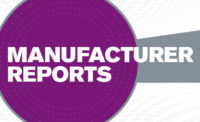
There have been changes to the office building over the years, notably the addition of air conditioning in 1985. The Northridge earthquake caused significant damage, occupancy declined and new owners -Century Life of America - took possession of the property. They decided to restore the building to its original high level of design, to match the restoration enjoyed by the El Capitan Theatre, and to become a part of the general redevelopment of Hollywood Boulevard. Century Life retained Fields and Deveraux AIA, the architects for the El Capitan Theatre renovation, to provide design services for the El Capitan Office Building restoration.
The air conditioning equipment installation had consisted of six air-cooled units located on the roff of the 54,150 square foot building. Each unit was provided with kWh meters to allow for apportioning energy consumption to tenants for off hours' usage. Engineers from Rosenberg & Associates conducted a thorough examination, and determined that the casings, fans and coils were in good condition, but that the age of the units made the compressors and refrigeration components questionable. In addition, the units were much less efficient than the current generation of equipment. ReAew of the building loads also indicated that heating and cooling capacities were marginal and that increased capacities would be required if the building was to be able to accommodate high tech tenants with large internal loads. Century Life's eventual goal was the remarketing of the building as a Class A property, and that meant a new, more efficient system, one that could also allow for increased cooling capacities in the future.
Ken Morrison, a member of the Rosenberg & Associates design team, evaluated six different alternatives for the project. Each was reviewed against the criteria that the owner had established as important. Capital cost, loss of usable space, maintenance, operating cost, simplicity of operation, noise and vibration and the ability to directly meter tenants were all primary considerations of Century Life of America.

"Thermal storage was a clear winner when we performed the evaluation," Monison said, "The estimated cost premium for converting to chilled water was $40,000 and a simple payback of less than five years was projected without utility company rebates," he added.
An additional benefit of the ice storage was the ability to increase the capacity of the fans and ducts by reducing supply air temperatures slightly. In turn, that made projected increases in building cooling requirements possible without revising existing building shafts. That was important, because the building has small floor plans of approximately 7,450. New duct mains would have consumed too much floor space within the tenant areas.
Calmac's ice storage system consists of a nominal 125-ton Trane packaged air cooled water chiller, which provides chilled water at 20'D to five Calmac Model 1190 ICE BANK storage tanks. This combination allows for the chillers to be completely off during the utility's peak period of 1 p.m. to 5 p.m. daily.
A secondary chilled water pump circulates water from the chillers or storage tanks as needed to provide 400 chilled water to the air handlers. The entire system is protected with 30% glycol. The owner opted to replace the existing unit DX cooling coils, making the entire system that much closer to "new". Since the building had originally been designed, back in 1926, to accommodate a future seventh floor, structural modification necessary for the weight of the new equipment minimal.
To provide state of the art controls and to allow for optimum tenant control, a DDC control system has been provided and the VAV terminals are being converted to full DDC, which will allow for monitoring and control for all of the tenants.
It's been nearly three years, and the dry climate in Los Angeles has kept the rooftop casings in good condition - in fact, it is expected that they have decades of useful life ahead. The new system has reduced operating costs, and allowed the owner to meet their objective of improving the quality of the building at a relatively low cost.
For more information, contact Calmac Manufacturing Corporation at 201-569-0420, e-mail calmac@calmac.com, or go to www.calmac.com.
Publication date: 04/16/2001


